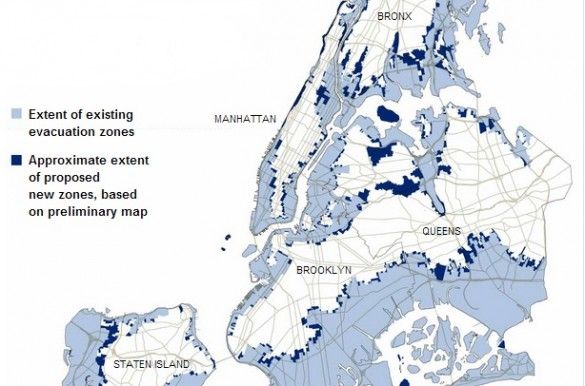Evacuation Zones To Double Across City

Mayor Michael Bloomberg’s office announced that it is doubling the number of evacuation zones along New York City’s coastline. The New York Times is reporting that the expanded map will add 640,000 residents to the three million New Yorkers already living in such zones, putting 37.5 percent of the total population in evacuation zones.
The city is hoping that by expanding the evacuation zones, people will take calls to evacuate more seriously. The new map represents only a preliminary look of what is expected to change. A more detailed map is expected to be released in June.
While the evacuation zones have been expanded, it’s worth noting that to date, residents located in Zone A, which includes Sheepshead Bay, have been the only ones ever asked to evacuate.
The release of the new map was the major highlight of a city report on the response to Superstorm Sandy. The New York Times summarized a list of other conclusions and initiatives drawn from the report.
Many lessons learned from Hurricane Sandy will be set down in new “playbooks” for city agencies that had to learn on the fly how to deal with a major storm’s aftermath: how to request waivers and extensions from federal school-lunch and food-stamp programs to serve a deluge of needy families; how to muster economic development programs to help battered businesses get back up to speed faster.
Others issues will be left to future task forces to interpret.
A number of smaller recommendations are already being acted on, like the purchase of more emergency lights, generators and small boats for firefighters.
The report also calls for new regulations for hospitals, nursing homes and adult homes during evacuations. It recommends the creation of a patient tracking system, better communication equipment and guidelines for the return of patients.
Regarding hospitals, the Times criticized the report’s defensive posture over the decision not to call for an evacuation of the city’s medical facilities, including Coney Island Hospital. The report failed to address the basic fact that many major hospitals are located in vulnerable evacuation zones, leaving no guidelines for future planning.The city insisted it would release a different report on infrastructure in the future.




